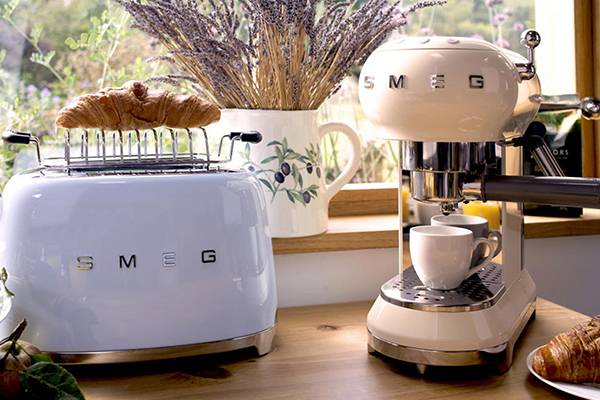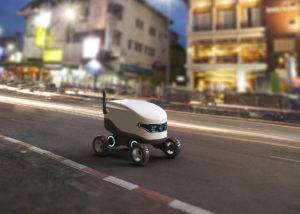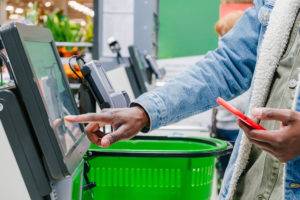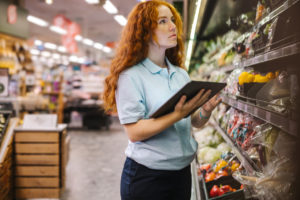
SMEG Customer Case Study
Download this data sheet to explore the features and benefits of Naveo Commerce for Enterprise Grocery.
COVID-19 has reshaped the world as we know it, and for the grocery sector, it has accelerated the shift to online. In part two of his series on the future of the grocery business, Naveo Commerce CRO Tomas Granö puts consumer expectations under the microscope to reveal customer convenience as a central theme.
By Tomas Granö, CRO
A recent study found that online grocery sales have jumped to take 13.1% of total UK market share throughout January 2022, up from 11.3% in December 2021, and is now the highest it’s been since July 2021. These figures are reflective of the huge digital transformation both leading supermarkets and start-ups have had to undergo. Organisations in this sector have had to rapidly evolve their business models, to offer the digital capabilities and services that consumers are now accustomed to. However, as we approach the two-year anniversary of the pandemic, what can we expect from the grocery sector in 2022? How will it evolve over the coming year, and what trends will dominate this market?
As a result of the pandemic, consumers have had to adapt to new methods of shopping, which in turn, has led to the birth of a new type of customer – the ‘fusion shopper’. The term refers to customers whose shopping habits blend across bricks and mortar, online, and click-and-collect. As consumers grew comfortable with the convenience of online shopping, they became increasingly reliant on using this method to purchase both daily and weekly shops. However, to overcome the challenges of increased demand, businesses are embracing omni-channel services that can optimise their supply chains. Many grocers have expanded their delivery models, looking at how they can split their offerings across all methods of purchasing.
However, whilst consumer behaviour is changing the grocery landscape, the experience has not always been smooth. Research revealed that less than 1 in 3 Europeans (28%) said that online shopping was their preferred shopping method and a shocking 53% describe click-and-collect as “the worst of both worlds”. Which is why brands need to shift towards a blended model, that ensures no matter the way people shop, the experience remains consistent. For click-and-collect or online shopping, this could be by making sure payments are frictionless, packaging is not damaged upon arrival, and clear communication is established with the consumer.
The disruption within the grocery sector has forced businesses to rapidly adapt, and has pushed technological adoption to the forefront of business leaders’ minds. The grocers who have made substantial progress with their digital transformation initiatives will be the ones who can keep pace with innovation and meet the needs of modern consumers. And as we saw in 2021, we can expect to see ‘Big 4’ supermarkets continuing to leverage technology to transform the customer experience, optimise processes and future-proof their businesses.
To extract the most value from the technology, businesses must first understand how it can help them deliver more efficient, seamless services. Using big data and analytics, grocers can improve the user journey, by predicting how consumers will shop, which products they’re most likely to purchase and through which channels. Grocers can differentiate themselves by taking a personalised approach, where the experience is tailored to the individual consumer.
Technologies such as artificial intelligence (AI) and machine learning (ML) can give grocers the insight needed to understand shoppers’ habits. Using these insights presents further opportunity for personalisation – recipe ideas, meal plans and suggested products can all help in improving customer experience.
We can expect to see online grocery to continue on its upwards trajectory throughout 2022, even with physical stores now open. But grocers need to be strategic in their thinking, and must be able to clearly differentiate between the two key customer journeys. Whether its speed and convenience, or personalisation and customer loyalty, if technology is well integrated and optimised, grocers will remain successful in understanding the needs of their consumers.
Other trends that dominated the last 12 months include the rise of subscription boxes (as a convenient and appealing solution to the closure of the hospitality industry) and faster, sub-one-hour delivery programmes being rolled-out across the UK. The acceleration of grocery delivery times is not going to slow down in 2022. However, gaining a competitive edge requires businesses to fully embrace innovation. Across the next year, we expect to see grocers seizing the opportunity of upselling, combining subscription and recipe models to give their customers an end-to-end, convenient shopping experience. These organisations will leverage their already well-established customer-base to take subscription boxes a step further, using retail technology solutions to increase basket value and offer recipe recommendations.
The grocery market is becoming increasingly competitive, which is why it is more important now than ever before for businesses to stay ahead of the curve. This can be through harnessing the power of technology, adapting their business models to meet ever-changing consumer needs, or broadening their offering across multiple touch-points. Whatever the solution, we don’t expect the industry to slow down any time soon. Grocery brands must take the necessary steps now to avoid falling behind.
To discover how to kick-start the digital transformation that will support your business in 2022, get in touch.

Download this data sheet to explore the features and benefits of Naveo Commerce for Enterprise Grocery.

As Naveo Commerce plans its exciting launch of Scan & Go supermarket technology, we look at the key differences between this and self-checkout services already offered in most grocery stores.

As Naveo Commerce plans its exciting launch of Scan & Go supermarket technology, we look at the key differences between this and self-checkout services already offered in most grocery stores.

After Brexit, the Climate Emergency will be top of the UK Government’s agenda. But, what can retailers do to make a difference – before it’s too late?

After Brexit, the Climate Emergency will be top of the UK Government’s agenda. But, what can retailers do to make a difference – before it’s too late?

Customers are becoming increasingly used to a seamless purchasing experience. For the grocery sector, getting this right can be challenging, but as Naveo Commerce CRO, Tomas Granö shares, having a coherent, customer first personalization strategy in place is key.

As Naveo Commerce plans its exciting launch of Scan & Go supermarket technology, we look at the key differences between this and self-checkout services already offered in most grocery stores.

As Naveo Commerce plans its exciting launch of Scan & Go supermarket technology, we look at the key differences between this and self-checkout services already offered in most grocery stores.

Customers are becoming increasingly used to a seamless purchasing experience. For the grocery sector, getting this right can be challenging, but as Naveo Commerce CRO, Tomas Granö shares, having a coherent, customer first personalization strategy in place is key.